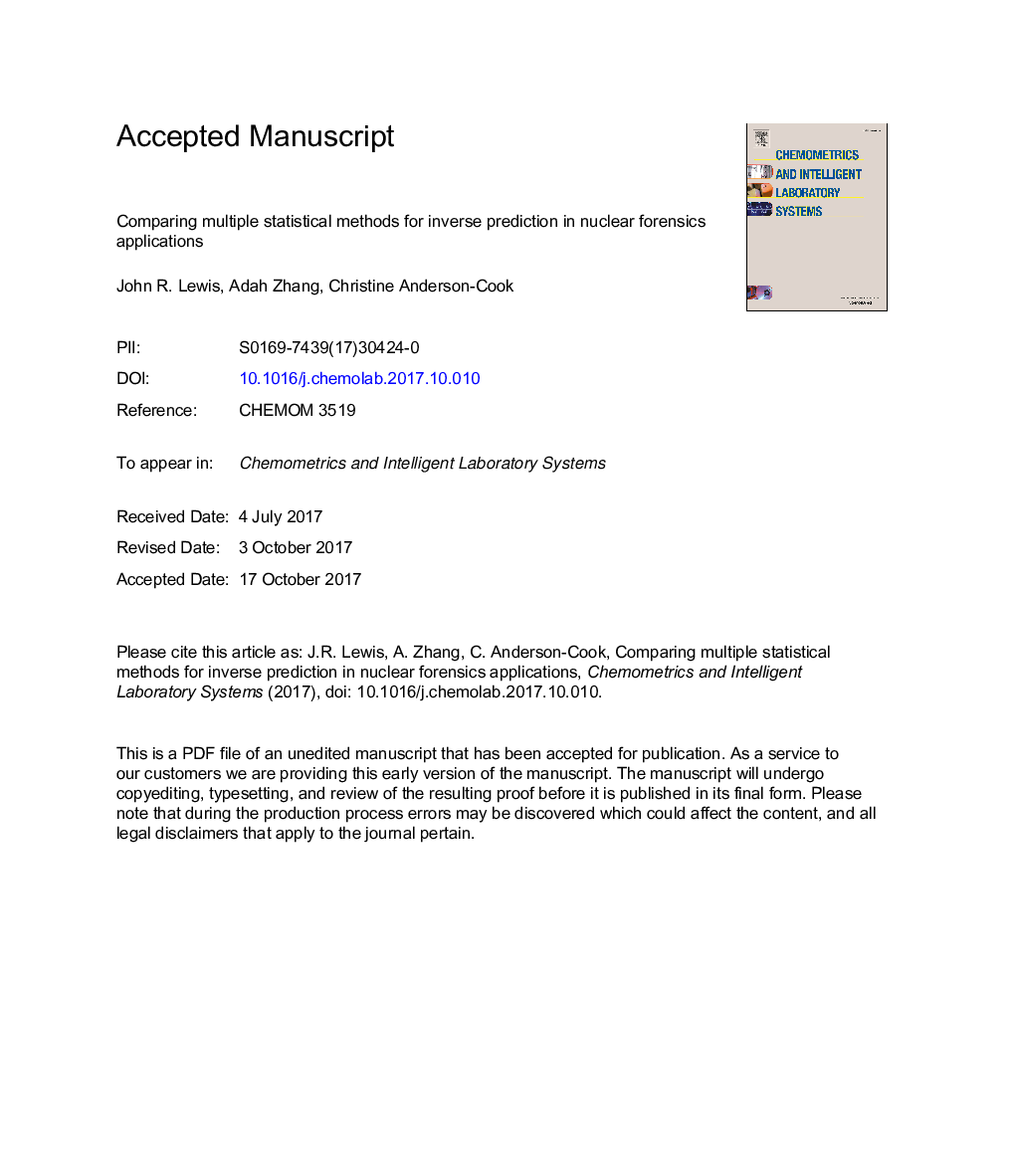| Article ID | Journal | Published Year | Pages | File Type |
|---|---|---|---|---|
| 7562166 | Chemometrics and Intelligent Laboratory Systems | 2018 | 29 Pages |
Abstract
Four methods are reviewed in this article. Two are forward modeling methods and two are direct inverse modeling methods. Forward modeling involves building a forward casual model of the responses (Y) as a function of the source characteristics (X) using content knowledge and data ideally obtained from a well-designed experiment. The model is then inverted to produce estimates of X given a new set of responses. Direct inverse modeling involves building prediction models of the source characteristics (X) as a function of the responses (Y) - subverting estimation of any underlying causal relationship. Through use of simulations and a data set from an actual plutonium production experiment, it is shown that agreement of predictions across methods is an indication of strong predictive capability, whereas disagreement indicates the current data are not conducive to making good predictions.
Keywords
Related Topics
Physical Sciences and Engineering
Chemistry
Analytical Chemistry
Authors
John R. Lewis, Adah Zhang, Christine M. Anderson-Cook,
